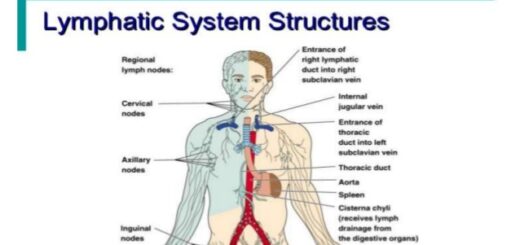Function of White blood cells, Agranular leukocytes, Granulopoiesis and Lymphopoiesis
White blood cells have nuclei, which distinguishes them from the other blood cells, the anucleated red blood cells (RBCs) and platelets, WBCs are also called leukocytes or leucocytes, they protect the body against both infectious disease & foreign invaders, they are derived from multipotent cells in the bone marrow known as hematopoietic stem cells, Leukocytes are found throughout the body, including the blood and lymphatic system.
White blood cells (WBCs)
White blood cells are classified in standard ways, two pairs of broadest categories classify them either by structure (granulocytes or agranulocytes) or by cell lineage (myeloid cells or lymphoid cells), They can be divided into the five types which are neutrophils, eosinophils (acidophiles), basophils, lymphocytes & monocytes. Monocytes & neutrophils are phagocytic.
Agranular leukocytes
Monocytes
Monocytes are so-called because they have a single, non-segmented nucleus. They constitute about 3-8 % of the total leukocytic count.
LM picture
- In blood film: monocytes are the largest leukocytes.
- Nucleus: large, eccentric, and kidney-shaped or horse-shoe shaped with deep indentations.
- Cytoplasm: abundant, pale basophilic, and finely granular.
EM picture
- Shape: during phagocytosis, monocytes have an irregular outline due to the extension of pseudopodia.
- Cytoplasm contains small dense azurophilic granules containing lysosomal hydrolytic enzymes.
Function of monocytes
Monocytes stay in circulation for only a few days, they then migrate to the different body tissues. There, they can differentiate to specific tissue macrophages that constitute the mononuclear phagocytic system that includes: Macrophages in connective tissue, Osteoclasts in bone, Microglia in CNS, Von Kupffer cells in the liver, In chronic infections, macrophages fuse with one another, forming multinucleated giant cells.
Macrophages play an important immunologic role by:
- Phagocytosis of foreign substances (antigens) e.g. bacteria, virus-infected cells, malignant cells.
- Acting as antigen-presenting cells, after phagocytosis, they can process antigens and present them to T lymphocytes.
Granulopoiesis
It is the formation of granular leukocytes, including neutrophils, eosinophils, and basophils, in the bone marrow. Granulopoiesis passes through the following common stages:
- PHSCs.
- MHSCs.
- Colony forming unit-granulocyte, erythrocyte, monocyte, megakaryocyte (CFU-GEMM). Further differentiation of colony forming units ends with the formation of neutrophils by (CFU-G), eosinophils (CFU-Eo), basophils (CFU-Ba) and monocytes (CFU-M).
- Myeloblasts.
- Promyelocytes: The cytoplasm of these cells is more basophilic as active protein synthesis goes on and the production of azurophilic granules begins.
- Myelocytes: At this level, the specific granules for each type of the granulocytes start to appear in addition to the azurophilic granules. Accordingly, the cytoplasm shows decreased basophilia dominates in basophils. The cells after this stage do not undergo further cell division but proceed with their morphological maturation.
- Metamyelocytes: The specific granules are more abundant. The cytoplasm shows the staining affinity characteristic for each of the granular leukocytes. The neutrophils, in particular, present by the end of this stage with an additional phase known as the band cells. They are immature neutrophils with a characteristic band-shaped nucleus. They are usually retained in the bone marrow as a store to be released into the circulation whenever there is an acute infection.
- Mature granulocytes: In addition to the full development of the specific and the azurophilic granules, the nucleus becomes segmented in the pattern characteristic for each type of the granulocytes.
Lymphocytes
Lymphocytes are so-called because they constitute the main cell population in the different lymphoid organs. Only a small fraction of lymphocytes is circulating in the blood. They constitute about 20-30 % of the total leukocytic count. lymphocytes can live for several months. The memory cells (one type of lymphocytes) can live for several years.
LM picture
- Shape & size: rounded cells with variable diameter.
- Nucleus: large, dense, and slightly indented.
- Cytoplasm: narrow rim of basophilic cytoplasm which surrounds the nucleus.
EM picture
- The cytoplasm contains small dense azurophilic granules containing lysosomal enzymes.
- The cell coat contains a large number of cell surface receptors acting as antigenic markers. These include the cluster of differentiation antigens.
- On the basis of these surface receptors, lymphocytes can be classified into different functional types.
Types and functions of lymphocytes
They are divided according to their size into Large lymphocytes, Medium-sized lymphocytes, and Small lymphocytes. Both the large and medium-sized lymphocytes are functionally-less differentiated lymphocytes. Most lymphocytes in the blood are small with a diameter similar to that of RBCs. They represent the mature form of lymphocytes. Small lymphocytes are functionally further subdivided into:
- T lymphocytes constitute 60-80% of small lymphocytes. They develop in the bone marrow and mature in the thymus (hence the initial letter T). They are responsible for cell-mediated immune response.
- B lymphocytes constitute 20-30% of small lymphocytes. They develop and mature in the bone marrow. They are responsible for the humoral immune response.
- Natural killer (NK) cells lack the marker molecules characteristic of T and B cells. They originate from the same precursors of T and B cells in the bone marrow.
Lymphopoiesis
It is the formation of lymphocytes. It takes place in the primary lymphoid organs (bone marrow and thymus). It passes through the following stages:
- PHSCs.
- MHSCs.
- Colony forming unit-lymphocyte (CFU-Ly), Some daughters of these cells migrate during fetal and early postnatal life to the cortex of the thymus where they differentiate into colony forming unit-T lymphocyte (CFU-LyT). The rest remains in the bone marrow and differentiate to colony forming unit-B lymphocyte (CFU-LyB). Both these colony forming units do not express specific surface receptor i.e. they are not immunocompetent.
- Colony forming unit-T lymphocyte (CFU-LyT): They undergo several cell divisions during their residence in the outer zone of the thymic cortex giving rise to T lymphoblasts. T lymphoblasts also divide repeatedly producing immunocompetent T lymphocytes expressing specific surface receptors.
- Colony forming unit-B lymphocyte (CFU-LyB): While still in the bone marrow, these cells divide giving rise to B lymphoblasts. They divide repeatedly producing immunocompetent B lymphocytes expressing specific surface receptors.
White Blood cells structure, function, types and How they are formed in the body
Symptoms of hemophilia, Disorders of hemostasis, Thromboembolic & Bleeding
Lysis of blood clot, Factors that prevent clot extension & Role of platelets in hemostasis
Red blood cells (Erythrocytes) structure & function, Myeloid tissue & Bone marrow
Hemoglobin structure, review & Types of normal hemoglobin
Immune system structure, function, cells & Types of body defense mechanisms




For thе reason that the admin of this web site is working,
no uncertainty very soon, it will be well-known, Ԁue to its quality contеnts.